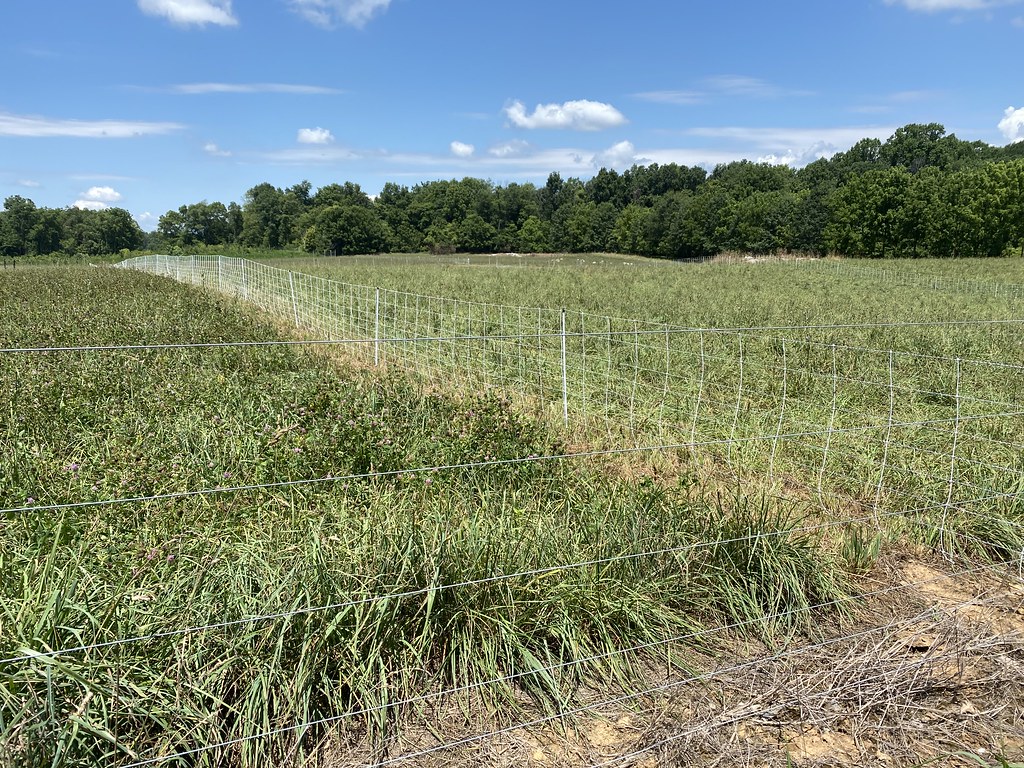 |
| Each group is grazing 4 paddocks (5 acres) |
We attribute the weight loss/poor performance to lack of acclimation. While the lambs had been grazing, the composition of their pasture was considerably different than the pastures being used in the study: mostly grass vs. a lot of clover. On July 6, almost 37 percent of the lambs (n=29) had positive dag scores; some, high. A dag score (0-5) refers to the quantity of fecal material on the back side (tail, breach, and legs) of the animal. The younger lambs were most likely to have positive dag scores. There were more positive dag scores in the PASTURE group than the SUPPLEMENTED group: 19 vs. 10.
When the lambs were assessed again on July 13, considerable improvements were observed, especially in the PASTURE group (n=37) , which responded with robust gains. Since the last weighing, the lambs in the PASTURE group gained an average of; 0.929 ± 0.315 lbs. per day. The median ADG was 0.914 lbs. per day. No lamb lost weight. Lambs in the SUPPLEMENTED group (n=38) gained less: 0.509 ± 0.331 lbs. per day. The median was 0.486 lbs. per day. Only one lamb in the study lost weight between July 6 and 13.
 |
| Supplemented lambs (n=38) |
So far, internal parasites have not been a problem. No FAMACHA© scores above 3 have been observed. A couple of lambs with FAMACHA© scores of 3 have been dewormed. Body condition scores declined during the first 10 days of the study, but have since improved. The average BCS is 2.9 ± 0.4. Dag scores improved between July 6 and July 13.
Each group of lambs is being rotationally-grazed among four paddocks with similar forage quality and quantity. Forage samples are being collected. The lambs are currently grazing the 3rd paddock in their respective 5-acre systems. The supplemented lambs are currently receiving approximately 0.65 lbs. of barley per head per day. This represents less than 1% of their average body weight. The barley is being gradually increased until it reaches 1 lb. per head per day (slightly more than 1% of body weight.
Both groups have access to the central laneway. There is a roof structure that provides shelter/shade. It also covers the handling system. Water troughs and mineral feeders (n=2) are available to each group. High temperatures may also have contributed to the poor performance of the lambs in the first 10 days of the study.





No comments:
Post a Comment